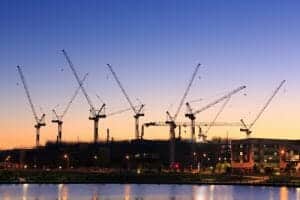The Australasia Energy Sector – Market Outlook

What is the market outlook for the Australasia energy sector?
Matt Underhill, MD of the Asia Pacific Region at energy recruitment firm NES Global Talent offers his view on the future outlook for vacancies and talent in the Australasia region.
Australian Energy Export Market
The Australian energy export market endured a turbulent 3 years from the oil downturn in 2014 however the past 12 months has shown considerable improvement. The market is now reflecting much stronger oil prices supported further by the softer Australian dollar and reduced operating costs, resulting in higher returns for the industry.
We are seeing increases in LNG exports, largely stemming from relentless and increasing demand from the world’s largest new energy destination, China. China’s trade tariffs on US LNG exports are resulting in more long-term trade deals with other LNG exporters, including Australia. Australia is in a strong position to meet China’s demands, supported by the countries 10 major LNG ventures.
The country is actively increasing reserves to fuel the life extension and possible expansion of these existing LNG facilities including Gorgon Phase II, Shell Crux, Inpex Phase II, the Barossa Project to extend the life of D LNG, as well as Woodside’s Browse and Scarborough developments. The Santos acquisition of Quadrant following the Dorado discovery off the WA coast along with increased investment in drilling and exploration on the eastern seaboard by mid-tiers such as Senex Energy is another sign of continued growth for the Australia energy market.
Australia’s Domestic Energy Markets
The positive outlook above would suggest a glowing future for Australia’s domestic energy markets, however without a resolution to the country’s long running political impasse on domestic energy policy any benefit remains unrealised. It was stated by Energy Minister Josh Frydenberg back in 2016 that Australia desperately needed to redesign its national energy market; two years later it seems no progress has been made. There have been ongoing arguments over; the appropriate level of commitment to renewables; bringing down increasingly higher prices; and uncertainty regarding midterm supply of gas in the Eastern States. This has over time at least resulted in a political desire to bring certainty on these issues for both the public and industry. However with the recent shelving of the National Energy Guarantee (NEG) it appears there still remains no common ground for the politicians to work with and no sign of a solution that would provide the certainty needed to progress.
Looking Ahead
In a recent Financial Review article, Energy is listed as one of the top three go-forward investment sectors. There is large demand for Australian LNG, with the country set to become the largest LNG exporter globally within the next couple of years. Despite the political issues domestically, Australia also has a positive outlook on renewable energy projects, mainly driven by its obvious attributes in geography and climate. Currently it has over 30 solar farms under construction and an additional 25 in the pipeline for future developments. There’s talk of developments in Floating, Storage, Regasification Units (FSRUs) by a number of operators to mitigate the gas shortages in Victoria and New South Wales. Commitment to further exploration programs by Esso, Origin and Cooper Energy means that whatever happens in Australia, there will be interesting times ahead and by the looks of it no lack of projects.
Conclusion
Even though political uncertainties are not ideal, the fundamental fact remains that Australia is in the early stages of a dynamic growth energy market, driven by a plethora of conventional natural energy resources, proximity to growing demand markets, and ideal climate/geographical conditions for future renewables. Despite the politicians best efforts it’s hard to believe even they will be able to hold back Australia’s ‘trifecta’ in this regard.
At NES Global Talent, we have witnessed a 35% increase in roles recruited against 2017 and for the first time in 5 years, certain positions are becoming hard to find. Labour markets are fast becoming a ‘sellers’ market’ and we expect niche skills to become only harder to find as the year progresses. With sensible political stewardship, we will hopefully see a sustainably growing Australian energy market that is beneficial to both buyers and sellers alike.